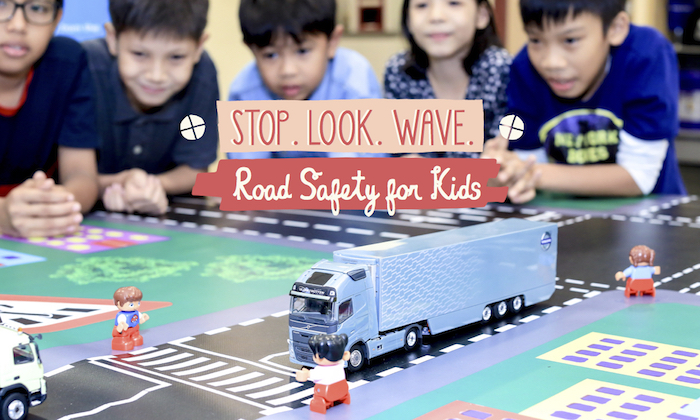
 Post Category - ParentingParenting
Post Category - ParentingParentingIt’s one thing to tell kids not to jaywalk or run across the street, but for them to really understand why, it’s important to show them. The brand synonymous with road safety the world over – Volvo – explains how to teach kids these important lessons.
Singapore may be one of the safest nations on earth, but a great deal of effort goes into making it so. Car fatalities and road accidents have declined overall in recent years, but 2015 saw a 20% jump in traffic accidents among children. There’s also been a recent increase in road accidents involving heavy vehicles like trucks. We already know the importance of car seat safety, but you can take things an important step further by teaching your kiddos general traffic safety, too, mama.
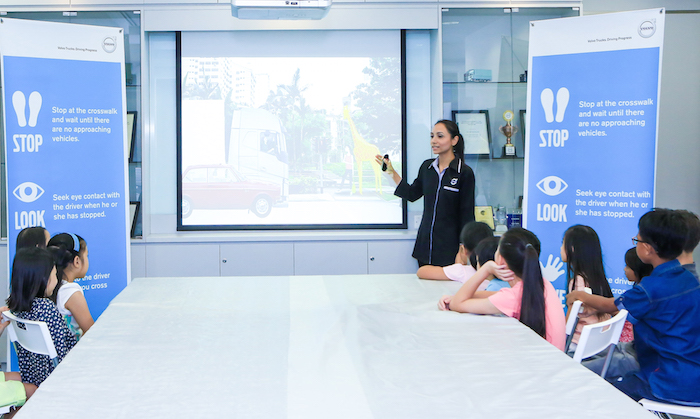
To encourage better road safety among kids in Singapore, the safety-minded folks at Volvo Trucks introduced a fab initiative called “Stop, Look, Wave” in 2014 (over 100,000 children around the world have already benefitted!). In Singapore they’ve teamed up with the Singapore Road Safety Council and Ministry of Education to conduct workshops at primary schools and community centres across the island.
These workshops have already reached more than 2,000 kids in Singapore this year, but now you can promote road safety at home with Volvo’s specially designed STOP, LOOK, WAVE road safety kits (download the basics here, mama). Each kit includes a kid-friendly video, a PowerPoint presentation, a printable street mat, and instructions on how to communicate it all to kids.
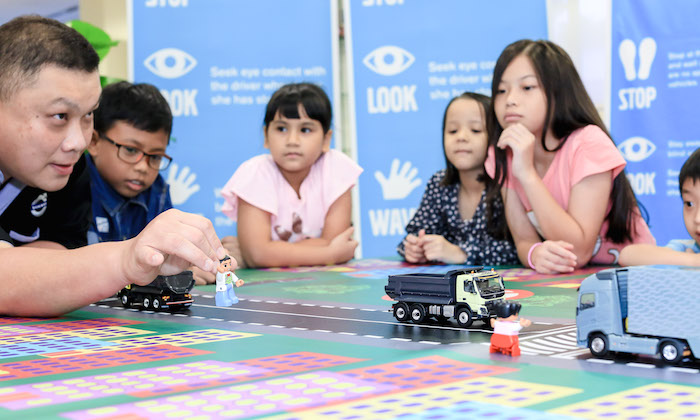
We spoke with Olivier Metzger, General Manager of Volvo Trucks Singapore (and a father of two) to find out a bit more about the program and his top tips for promoting road safety at home:
Why is it important for parents to play an active part in ensuring their kids learn road safety?
No matter what kids learn in our fun events, there’s no use if parents – and other primary caregivers, like helpers or grandparents – don’t play their role: the best way for kids to truly learn these lessons is to remind them and reinforce their learning frequently.
For instance, my co-worker was crossing the street last week and saw a helper with kids who ran into the street. We want to pass the message on to parents to show them the safety rules we’ve tried to teach the kids; what it means to have trucks on the road, and how to be safe around them.
We also need to remind parents that they are role models. If they don’t obey these rules, why should they expect their kids to? Even if the schools and traffic police do their part, if parents don’t because they’re jaywalking or not wearing a seatbelt, there’s no use.
It’s also important for parents to explain the reasons behind road safety rules – for instance, the purpose of crosswalks – rather than just tell kids the rules and assume they’ll follow them.
Reminding kids of these lessons on a daily basis is what most helps them put them into practice. Our fun and interactive materials also happen to be a fun way for parents to bond at home with their kids!
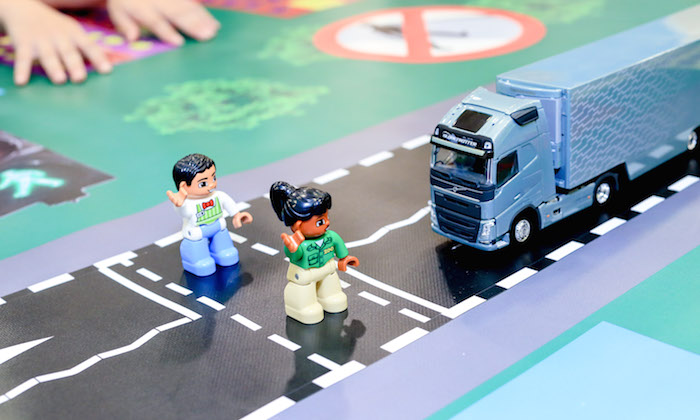
What are some road safety tips and best practices that you can recommend parents teach their children, especially around heavy vehicles?
The key message of our campaign is Stop, Look, Wave:
To cross the street, they first have to stop.
They have to look left, then right, then left and right again.
Then they have to wait for all the cars, trucks and buses to stop. Then finally as they’re preparing to cross, they have to wave to drivers to make sure that they’ve seen them.
We also show them that even if the first car or truck has stopped, there may still be another one passing by. We have lots of interactive discussions where we show kids different scenarios and ask them if it’s ok or not to cross. For instance, jaywalking, crossing while talking on the phone or listening to music, and so on.
What are some ways your program appeals to kids in particular?
In addition to getting to see our trucks up close [at the presentations], by using animated materials and visuals such as LEGO figurines and little toys, it’s so much more relatable to kids. They find the whole thing very interactive and fun to learn.
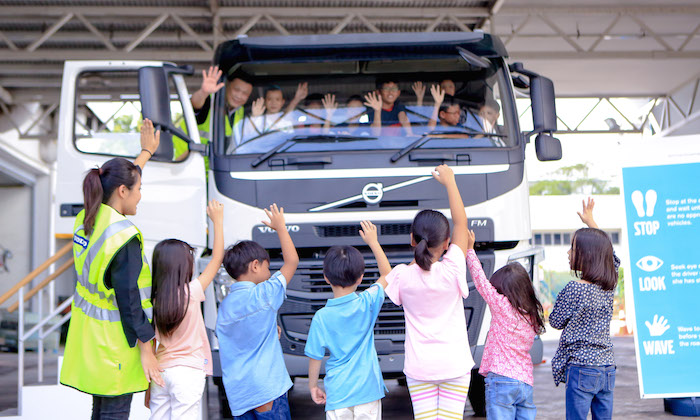
Why focus on truck safety in particular?
At a lot of our events, we’ve noticed when speaking with kids that they don’t really realize that trucks can be dangerous. They think that trucks are cool! They’re not scared of them, they think it’s always ok to stand behind them, or go up and try to touch the truck while it’s moving. We really want to emphasize to the kids that trucks are this tall and this long, and when you compare yourself to the truck, you’re actually very small! And that can cause serious injuries.
At our events we end by bringing the trucks for the kids to see, and they get to climb up in the cab while some of their friends stay down below. This way they can better understand how difficult it can be for a truck driver to see objects and people that are close by by seeing their blindspots.
As part of our road safety kits we have a scaled street map, and we show kids that they need to be at least five meters away when a truck is turning, because otherwise the driver won’t be able to see them.
What are some keys to road safety in Singapore specifically?
In Singapore kids in school learn “kerb drill”, which is looking right, looking left, and then looking right again to ensure all vehicles have stopped before safely crossing the road. But they don’t really get to practice it that much so as to really understand why it’s important.
Jaywalking is definitely a major concern in Singapore. We’ll often hear kids say something like, “My grandmother told me it’s ok to cross the street here because it’s closer than walking all the way down to the crosswalk.” We try to emphasise that this is wrong, because when you cross at any junction, even though it’s nearer to where you are going, there might be an oncoming vehicle that isn’t expecting you to be there.
Seatbelts are another one to emphasize with kids. We hear them say “It’s ok, we’re just riding in the backseat, we’re not driving anyway”. We show them that the purpose of wearing a seatbelt – even when you’re riding on the bus – is to protect you from something happening. So again we’re not just telling them, we’re explaining the reason behind each and every action that they should be doing.
Once again in Singapore in particular, it’s important to make sure that other primary caregivers, like helpers or grandparents, are also on the same page with these tips. It’s really important to also discuss the importance of road safety with helpers, and encourage them to participate in the interactive activities in our road safety kits.

How can parents and caregivers reinforce children’s road safety knowledge on a daily basis?
It’s just everyday behavior that we need to demonstrate ourselves to set an example. This is something I try to do with my own kids; you can’t just tell them all the time, “Don’t do this, it’s dangerous”, you need to show them.
Of course this is easier said than done!
In Stop, Look, Wave we really try to encourage kids to make sure that they’re seen by vehicles when they’re crossing. A lot of times they just assume that they’re seen, when in fact they’re not. So it’s really important to emphasize to kids to really make sure to double check that they’re seen by the driver whenever they encounter a driver. And of course they need to cross at designated areas and not between cars. Taking shortcuts is the biggest mistake that kids make on a daily basis, so
It’s just not up to drivers, and it’s not just up to kids. Everyone needs to play a role in ensuring road safety.
Thanks, Olivier! Click here for more info on “Stop, Look, Wave”; click here to download the PowerPoint presentation; click here to watch the video with your kids; and visit Volvo Trucks Singapore’s Facebook Page to download the road safety kits and information on upcoming public road safety events for kids.






 View All
View All


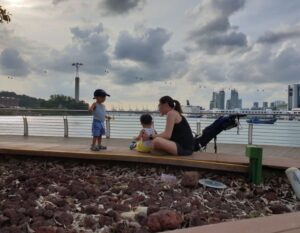
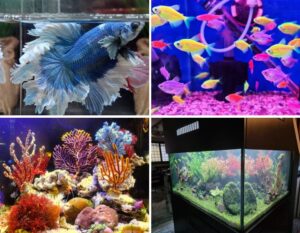

 View All
View All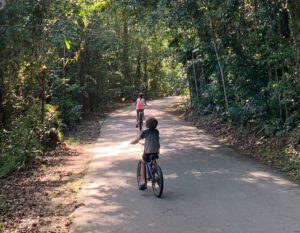
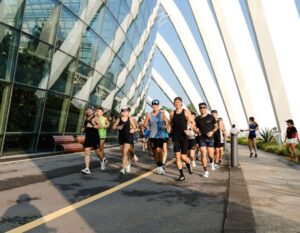

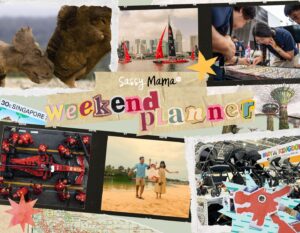


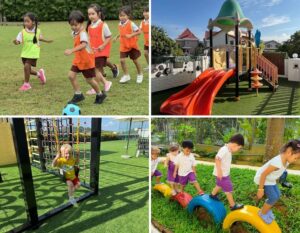

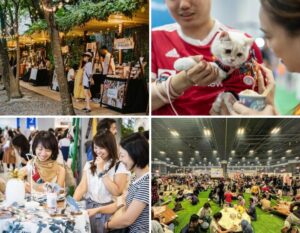

 View All
View All



![[𝗦𝗔𝗩𝗘 𝗧𝗛𝗜𝗦] 𝗞𝗶𝗱-𝗔𝗽𝗽𝗿𝗼𝘃𝗲𝗱 𝗗𝗲𝘀𝘀𝗲𝗿𝘁 𝗦𝗽𝗼𝘁𝘀 𝗬𝗼𝘂 𝗖𝗮𝗻 ‘𝗘𝗮𝘁 𝗳𝗼𝗿 𝗙𝗿𝗲𝗲’ 𝗪𝗶𝘁𝗵 𝗖𝗗𝗖 𝗩𝗼𝘂𝗰𝗵𝗲𝗿𝘀! 🍦🍩🧁😉
Before you ask “Can use CDC voucher?” Yes, you definitely can! These spots are perfect for an after-school treat, weekend fun, or just saying “yes” to dessert without saying goodbye to your wallet.
Comment “Sweet” or tap the link in bio for more foodie recommendations!
Got a fave kid-friendly spot that accepts CDC vouchers? Let us know in the comments too!
.
.
.
.
.
.
.
#CDCVouchersSG #SGMumLife #KidFriendlySG #FreeDessert #HeartlandEats #SweetTreatsSG #SGParents #FamilyFunSG #WafflesAndIceCream #BudgetParenting #ThingsToDoWithKidsSG #SGCafes #SupportLocalSG #KidsEatHappy #CDCAdventures](https://www.sassymamasg.com/wp-content/plugins/instagram-feed/img/placeholder.png)
